- Blog
- Southport The Town With Many Appellations
Southport: The Town With Many Appellations
A Southport history and heritage blog by David Walshe
The year that our town of Southport was founded is given as 1792- the year that Churchtown landlord, William ‘Duke’ Sutton decided to erect a crude shelter from washed-up timber at a spot in South Hawes, to accommodate the rapid increase in popularity in sea bathing.
South Hawes was a small settlement and with its neighbour, Hawes-side, amounted to an estimated population of 220 souls around this time; the hardy Sandgrounders residing in primitive cottages, the likes of which can still be seen in Churchtown, Marshside and just one fine solitary example in Birkdale.
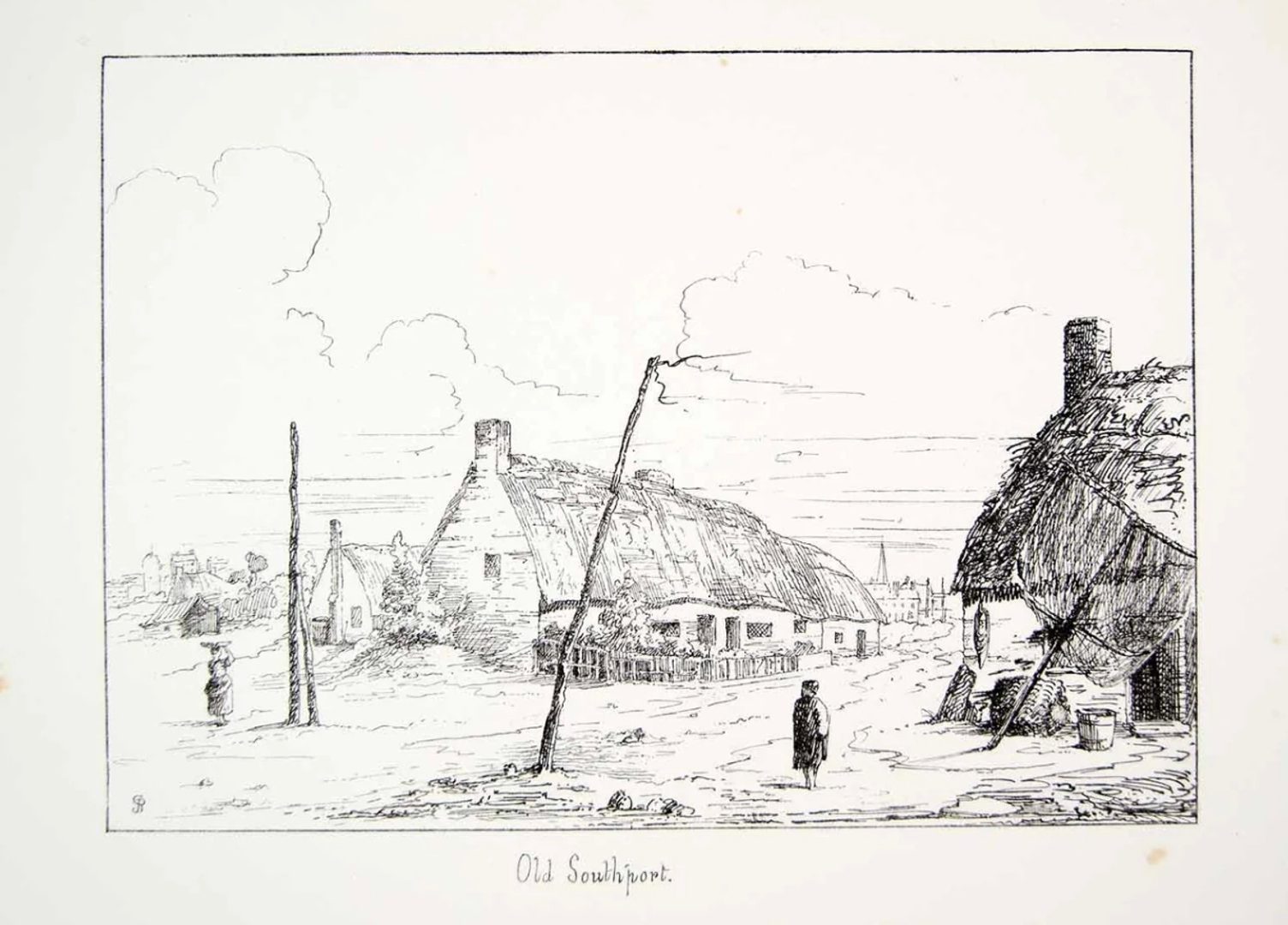
The area, previously ignored and cut off from the outside world, soon became known as a barren paradise of sorts- famed for flat, firm sandy beaches with the original settlers (mainly from Wigan to begin with) erecting marine residences amongst the sandhills, with their gardens ornamented with spoils from shipwrecks. It wasn’t long before it became one of the most fashionable bathing places in the north of England.
The health benefits of the location were undeniable and one Liverpool physician, Dr Joseph Brandreth, afforded ‘South Port’ as ‘The Montpellier of England’. This was within the first twenty years of our towns existence. The atmosphere was mild & salubrious, with the bathing village, surrounded by the eternal Starr-hills, and with our River Nile flowing between Sutton’s hotel and Sarah Walmsley’s Belle Vue cottage, would have been a most pleasing aspect, un-parallelled for many miles around.
The health benefits of the location were undeniable and one Liverpool physician, Dr Joseph Brandreth, afforded ‘South Port’ as ‘The Montpellier of England’.
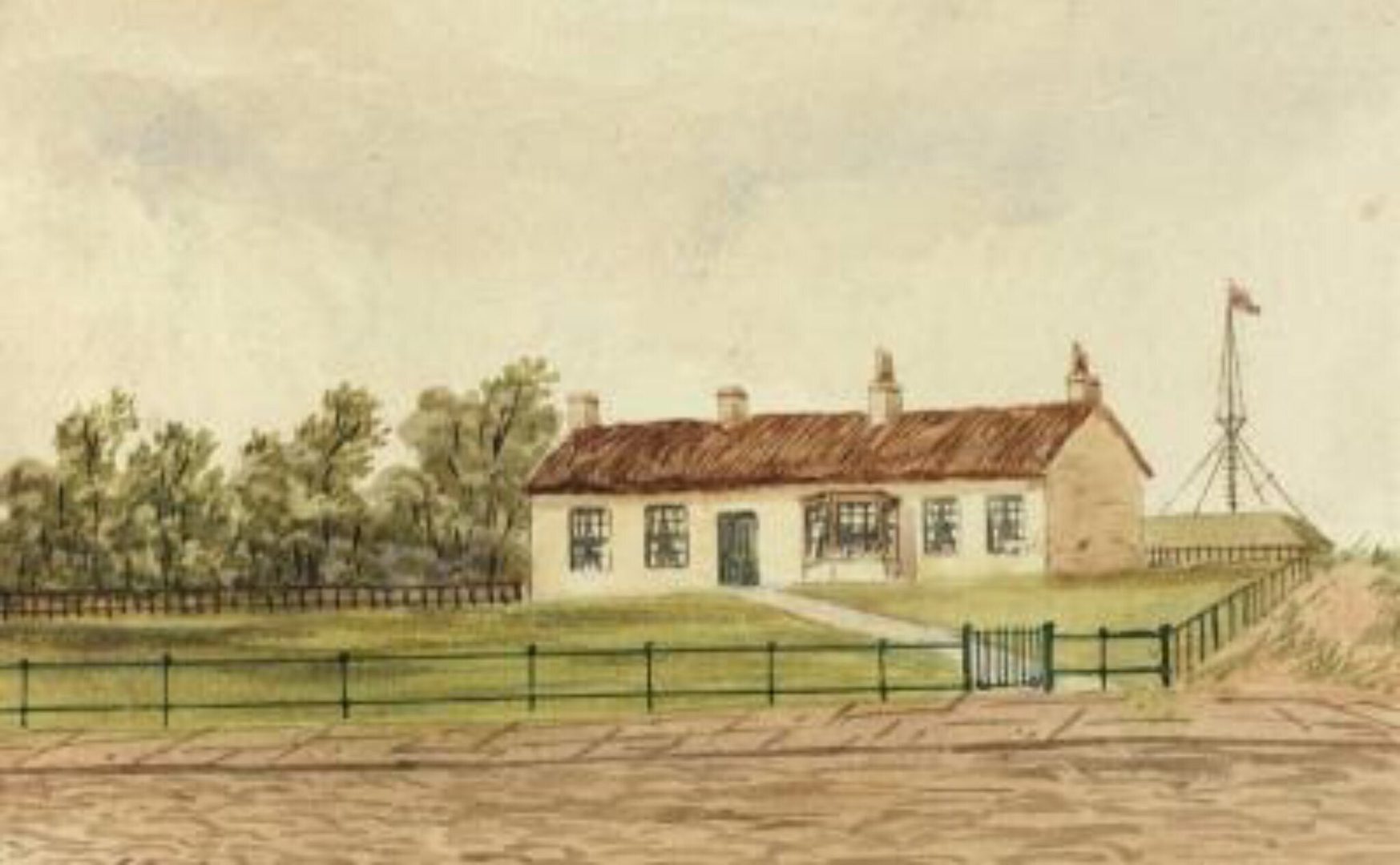
The early settlers, keen to share their new-found health resort with the rest of the region, set up a project called the ‘Strangers Charity’, which essentially provided respite-by-the-sea for sick individuals for up to three weeks, paid for by subscribers. Over the years & decades this project grew into becoming the Southport Convalescent Hospital and Sea-Bathing Infirmary on the Promenade.
From the mid C19th, Southport encountered rapid growth. The introduction of the railway, of which Southport became very well connected, played a huge role in this. Southport transitioned from a bathing village into a bustling sea-side town, and from the late 1860’s and into the first decade of the C20th, the Southport of old, with its ram-shackle shops on the seaward side of Lord Street and rows of lodging houses on the landward side, began to fade away, being replaced with buildings of grandeur of a much greater scale.
The sea was also retreating, which meant we gained the Marine Lake & Kings Gardens. Princes Park & Victoria Park were also developed on reclaimed land. Just outside the town centre, Hesketh Park opened in 1868, and in 1875, the Botanic Gardens opened in Churchtown, the village itself also becoming part of Southport in that year.
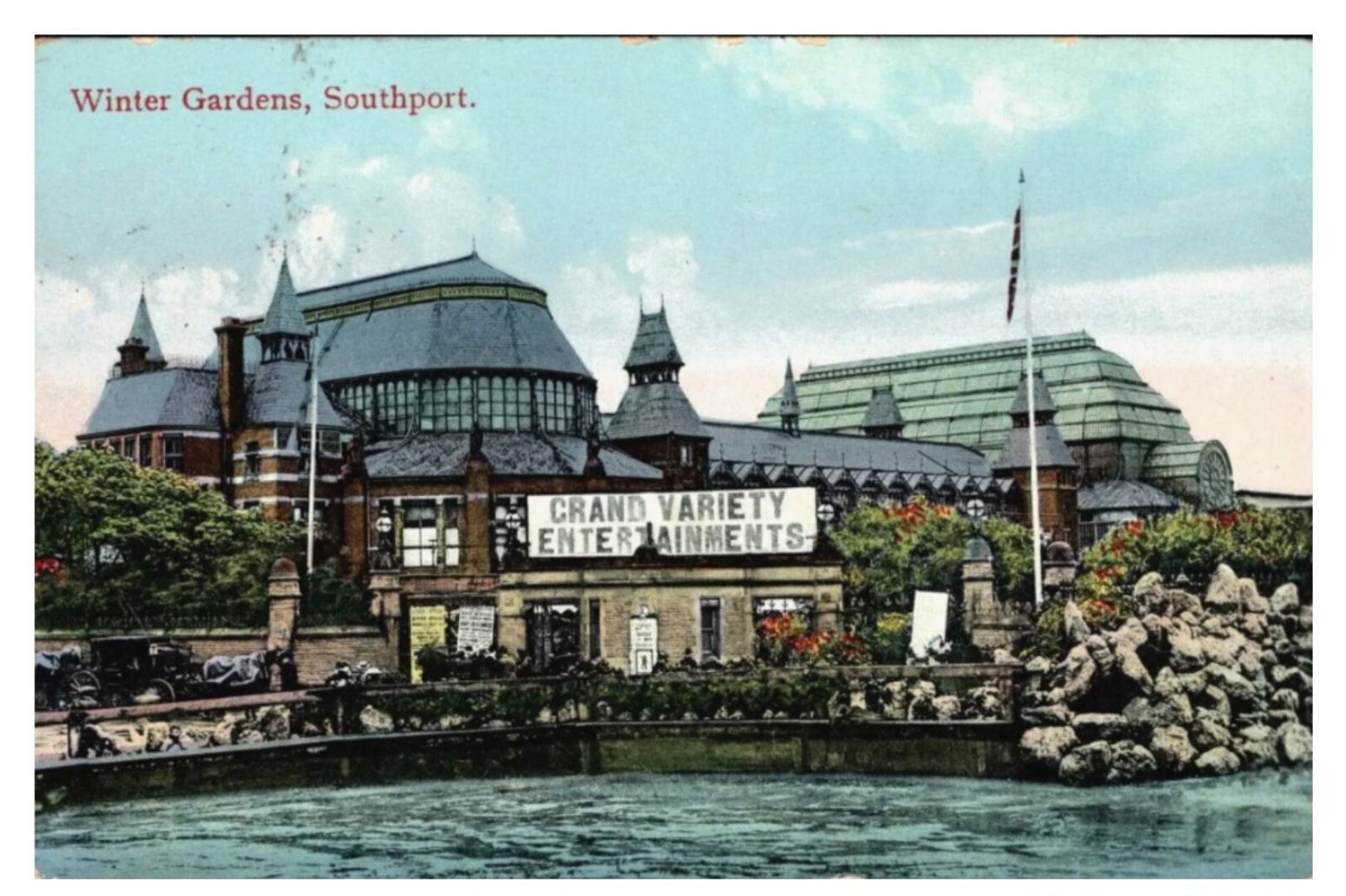
And it wasn’t long before a new appellation was soon to be bestowed upon the burgeoning town, one which was afforded for much of the C20th- ‘England’s Seaside Garden City’. It appears that this clever title was the combined efforts of the L.N.W.R and L & Y railway companies, and the Southport Corporation. Folkestone in Kent was this title given a little earlier than Southport, however, in 1911, a promotional film was produced, with a review in Kinematograph Weekly describing the ‘bright, interesting and animated scenes’, giving the impression that Southport ‘must be a very desirable place to spend a holiday in’. This title stuck with Southport.
And it wasn’t just the attractions of the town which aided this- the residential areas for the upper & middle classes all had large, sometimes huge plots, with magnificent gardens, with wide tree-lined streets, paved with our famous ‘Southport Tile’. For any wanderer visiting the town and stepping out into suburbia or taking a tram into the outlying villages, would have been blown away by the prettiness of the place. Virtually all of the working class or lower middle class properties all had front gardens, which wasn’t the case in many other towns & cities.
A somewhat brief and lesser known appellation appears within 1930’s promotional guidebooks. These guides, aimed at promoting Southport as a ‘Wintertime Resort’ were produced by the L.M.S. railway company and used the famous painting outside the Garrick Theatre by Fortunino Matania as the front cover. Within its pages, the town is described as, ‘The English San Francisco’ by a writer named S. P. B Mais. He states that the aim of the town, ‘has always been to be better than the best’ and likened Lord Street on a ‘warm evening on the threshold of winter’, to a ‘flash of Mentone (sic) with a soupçon of pre-war Vienna’. It is these references to continental Europe which lead us to another appellation that Southport is known by- ‘The Paris of the North’.
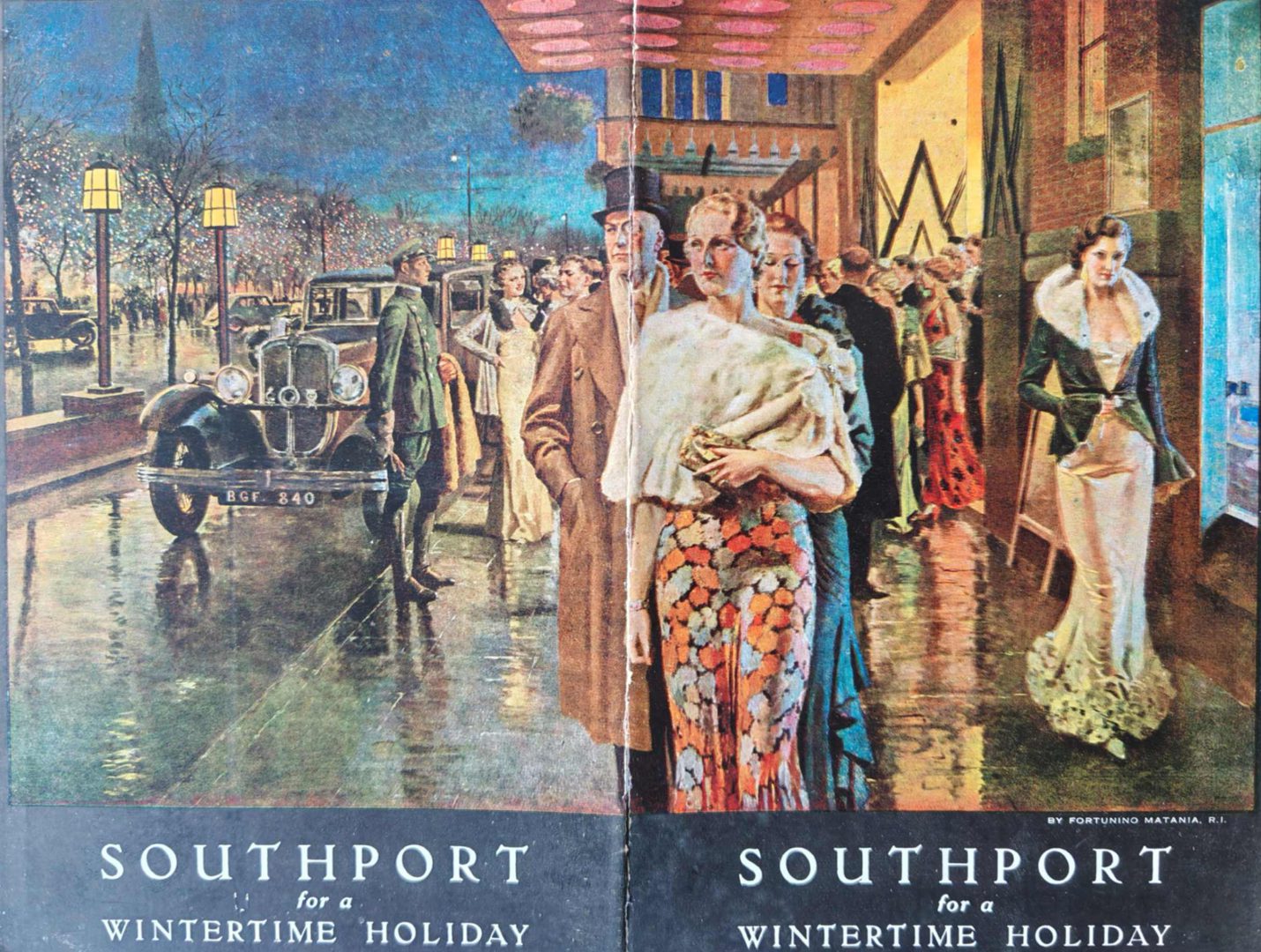
In 1955, F. A. Bailey’s A History of Southport was published for the first time, being commissioned by the Southport Corporation eleven years earlier, using data compiled by the great local historian, F. H. Cheetham. Within its pages is the first reference to the story of Charles Louis Napoleon Bonaparte (later Napoleon III) renting a house on Lord Street, namely South Lawn, the former site of this property lying directly north of The Monument, centred around the current No.395 Lord Street.
Much has been written recently as to whether he actually visited however, as I have stated on multiple occasions- Lord Street and Southport was a completely different place during the late 1830s & 1840s. The wide expanse of Lord Street was actually owed to the fact that the early properties were built well back from the sandy hollow in between the valley of sandhills (The New Marsh) upon which Lord Street was formed, and which would flood at times of rain.
The assertion that Lord Street was created as an act of parliament in 1825 is also incorrect, being confused with the widening of Lord Street in Liverpool. Bailey suggests that the site of Christ Church, (which opened in 1821 at the then northern extremity of the village), led the landowners to recognise that as the development continued, a building line would need to be adhered to.
An act relating to North Meols was also passed in 1825, with regard to the regular partitioning of land, formerly described as wasteland, in what became known as ‘Southport proper’. These partitions, also led in turn to the various streets intersecting Lord Street at right angles, i.e. Bold Street, Nevill Street etc.
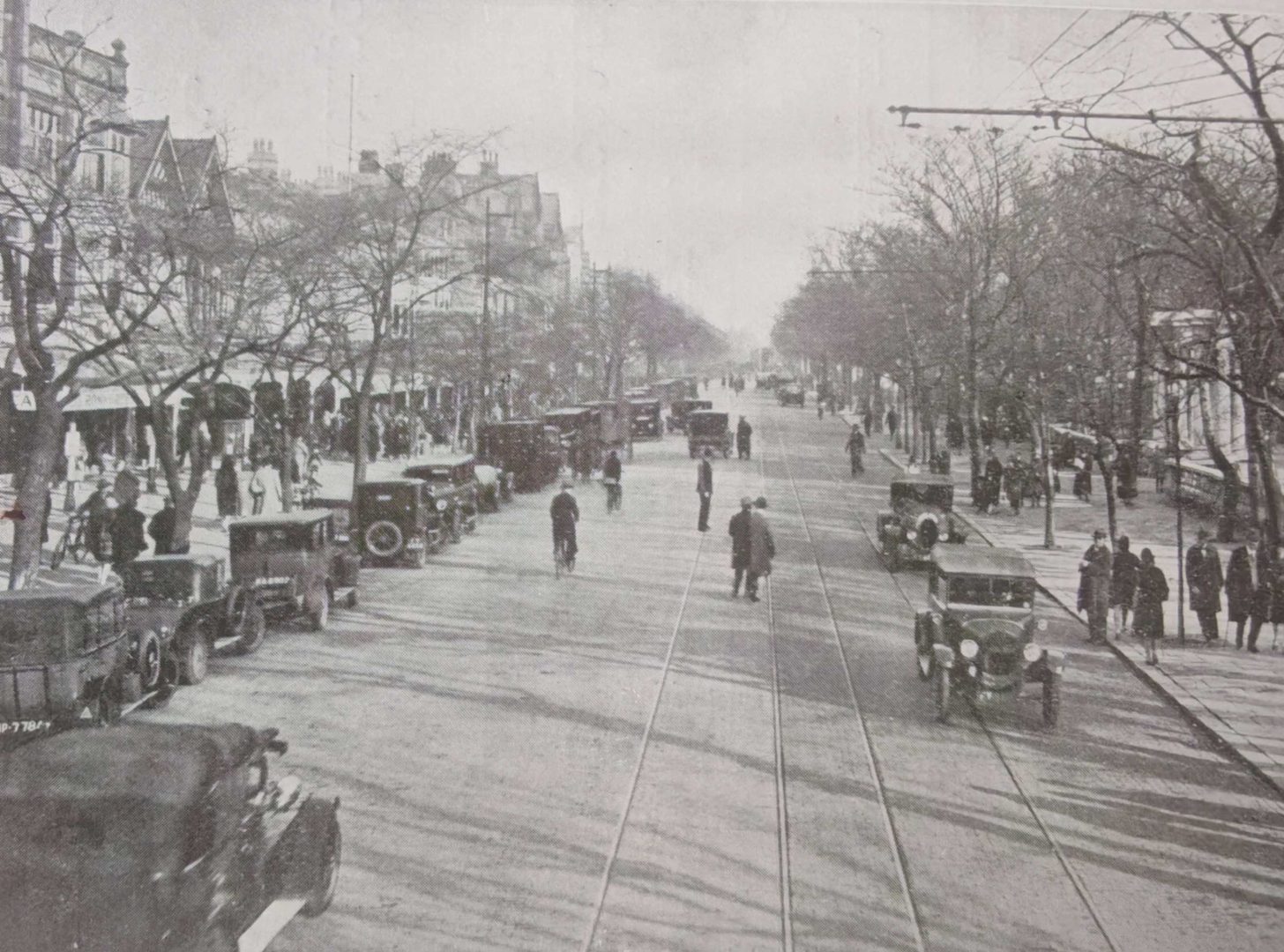
By the time of the early C20th, the natural & fortuitous occurrences mentioned above, coupled with the fact that the shop (seaward) side of Lord Street had almost been rebuilt completely, will have given rise to some writers declaring Southport as a, ‘transported Parisian boulevard’, no doubt a nod to the verandas, tree-lined streets and continental feel that Lord Street exhibited.
This brings up to the present day, with many citing that our town is on the cusp of a renaissance as it were, stepping aside from the title of ‘England’s Classic Resort’, whilst focusing on new cultural developments and re-engaging with the natural environment that we are so blessed with.
What title would you give Southport today going forward?
David Walshe is a historian and author who specialises in the local history of Southport and the surrounding areas. He regularly hosts local history talks and guided walks and has published two books to date.
- Website - Secret Sand Land
- Facebook - Secret Sand Land
You May Also Like

Have some great content to share?
Do you represent a business in Southport town centre? Let us know if you have any upcoming events, offers, or would like to be featured in any of our blogs.
